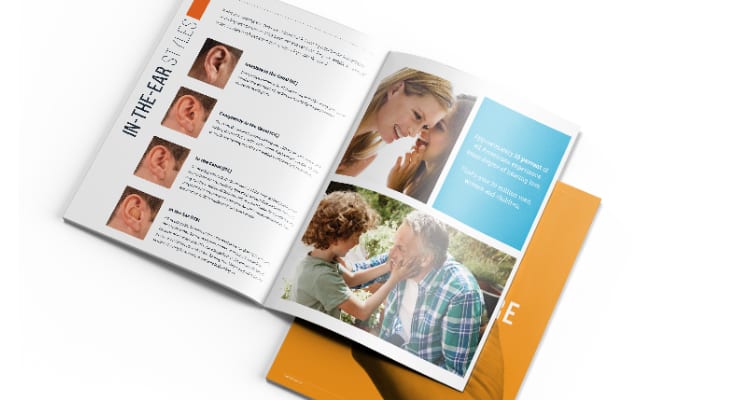
If you are one of the 50 million Americans who experience hearing loss, wearing hearing aids is a very likely situation. The right hearing can improve communication, increase your self-confidence and boost your quality of life. Every audiologist would agree that they are life-changing products for the individuals who need them.
However, it should be noted that not all hearing aids are the same. Aside from an assortment of different brands, hearing aids are available in several styles. As a new hearing aids user, the marketplace can feel a little daunting. So, which is the right solution for your lifestyle? Let’s find out.
What are the main styles of hearing aids?
Hearing aids are available in several styles. Depending on where you look, it may be possible to find a wide variety of subcategories, especially when individual manufacturers use unique terminology to stand out from the crowd.
The three main hearing aid types, however, are listed below:
In the ear (ITE)
ITE hearing aid is a custom-made device that sits in the outer bowl. They are a little bulkier and more visible than some of the alternatives on the market but are quite powerful and can house a directional microphone as well as volume control.
Behind the ear (BTE)
BTE hearing aids are possibly the most recognizable. Aside from being visible due to their size and style, it is the type of hearing aid that most people are familiar with. They have a plastic tube that carries sound to an ear mold. This style of hearing aid now incorporates mini-BTE and receiver in the canal (RIC).
In the canal (ITC)
An ITC is the least visible of the three main types, although completely in the canal (CIC) and invisible in the canal (IIC) are even less noticeable. They sit in the ear canal opening and are one small device mostly used by people with mild-to-moderate hearing loss due to reduced power.
ITE, BTE, or ITC: which is right for your activity?
The right style of hearing aids will be determined largely by your choice of activities, at work and in recreational settings. Here are some of the common situations you may encounter, along with which hearing aids are right.
Work on telephones/with headsets
If you work in a call center, as a music producer in the studio or any setting where you need to use headsets or telephones. However, it should be noted that some RICs are now compatible with Apple devices, which does make life easier.
Nonetheless, ITCs are the best for regular phone users by far as their small size causes minimal impact on the handset.
Play lots of sport
As a professional or amateur athlete, clear communication with teammates and your surroundings is vital. BTEs give you the best chance of picking up a wider range of sounds, including noises from all directions. The ear mold stays in place, which is crucial too.
Travel enthusiasts
When you do a lot of traveling, you need to combine comfort with practicality. This is especially true when traveling for more than 24 hours at a time. ITEs offer many of the comforts that ITCs deliver, but without the fear of dead batteries.
The ITCs offer easy volume control too, allowing you to shut off when you want to get some rest on a flight or train.
Socialite
When socializing on a frequent basis, a BTE device will pick up sounds from all directions. This can be very useful in crowded spaces and gatherings with multiple people. However, their visibility should not be ignored as they can make new users feel self-conscious.
Therefore, you may find that an ITC or ITE is better suited for your emotional comfort. If this is the case, though, you may want to think about what events you attend.
Other factors to consider
Matching the right style of hearing aids to your lifestyle and activities is a vital factor for finding the best devices. There are plenty of additional factors to consider, including but not limited to:
- The severity of your hearing loss, as BTE hearing aids may be better when you have severe or profound hearing loss.
- Your budget. After all, there is a significant contrast in prices depending on style and device manufacturer.
- Other issues you may experience, such as poor dexterity. Changing the settings and batteries is a regular task.
Thankfully, whichever style of hearing aid is selected, your audiologist can introduce you to a range of models with varying features across multiple price points.
When you require hearing aids, there are many options to choose from. Ultimately, there is no single right or wrong option, except for the hearing aids that suit your personal needs. Lifestyle and activity choices will play a central role in your decision-making process.
For the best results, you should contact your audiologist who can help identify the right solution while also guiding you through fittings and other tasks. Contact GL Wyeno Hearing Specialists PC at (402) 463-2431 to learn more!



